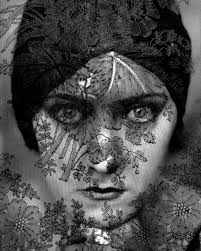The Radical Eye: Modenernist Photography from the Sir Elton John Collection
Tate Modern, Nov 2016-May 2017
I went to see this exhibition twice while it was on, once shortly after it opened in November and once in January. On both occasions, I thought I was one of the most best exhibitions have seen for a long time. As well as feature the work of photographers I had studied while working through this module eg Irving Penn, Richard Avedon and Paul Strand it also featured work by photographers I have long admired Man Ray, Edward Weston and included original prints of classic 20th century works like Dorothea Lange’s Migrant Mother.
With such a wide-ranging exhibition of great works it is hard to know where to start when writing a review so rather than trying to write about the full range of work I will focus on a few works that really stood out for me.
Firstly, the portraits of Irving Penn really stood out for me, perhaps this was because I had done some research of Penn’s work before visiting for the exhibition for the second time. I was surprised by the power of this work particularly the portrait of Salvador Dali where the sitter really dominates the tight space he is posed unlike the portrait of Noel Coward who seems to be intimidated by the space and is apparently trying to shrink back into it.
For some years I have admired the very precise work of Edward Weston and seeing the classic 1936 nude study below with its careful pose and lighting in its original form was something of a revelation.

I have always liked the work of Man Ray and the chance to see prints of many of his works was good, if I had to pick one of the it would be Tears shown below. I really like the way the woman is staring upwards, almost like a silent movie star expressing excessive emotion which is echoed by the huge glass tears.

The very surreal headless swimmer captured by Andre Kertesz in his “Underwater Swimmer” was another picture that stood out for me. It is a great example of a photographer capturing exactly the right moment so the swimmers head effectively invisible. Also, this work was displayed as a contact print which made it appear like a little jewel that you needed to stare intently add to appreciate all the detail.

Although I have largely picked out portraits and other pictures of people there were also a lot of other types of work included. There were many examples of close-ups of objects out of context and architectural studies using exaggerated perspectives. Of this work, I liked Aleksander Rodchenk’s picture of the Shukhov Tower taken in 1927. Today this type of perspective distortion is common but it was new in the 1920s and it really seems to work with this curved steel tower probably making it look much more interesting that it really is.

The one picture in the exhibition that disappointed me was Edward Steichen’s portrait of Gloria Swanson. I had seen another print of this in a exhibition in the USA a few years ago and had been very impressed but the print at the Tate just seemed dark and gloomy. Perhaps this was the effect of the wide gilt frame the print was mounted in? Whatever the reason it really didn’t have the impact of the previous version I had seen.

This exhibition was a rare chance to see such a large collection of famous works in one place, generally I thought that in most cases seeing the original prints gave me a much better opportunity to appreciate the work than looking at what I increasingly realise are rather poor reproductions in most books.



Pingback: Reflections on people and Place | People and Place